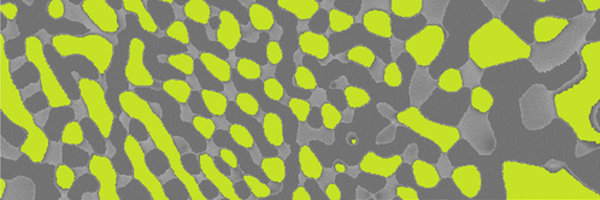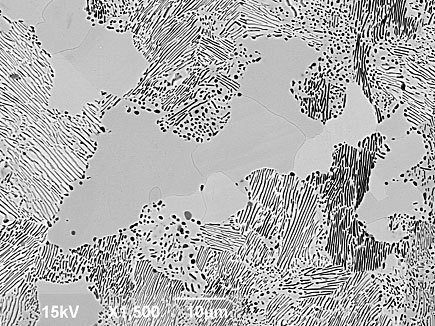
Kinetics and microstructure evolution during peritectoid transformations
Peritectoid transformations are a comparatively rare type of invariant reaction where in the solid state of a material, a phase A decomposes on heating into a mixture of two other phases B and C

As no liquid is involved, this type of invariant reaction often is very slow and difficult to be observed in conventional heating and cooling experiments as e.g. differential thermal analysis (due to growth problems) or it only starts at temperatures far away from the true equilibrium invariant reaction temperature (due to nucleation problems). A number of different intermetallic phases that were reported to decompose peritectoidally were chosen to study the kinetics of the reaction and the evolution of the microstructure during the transformation. An example is the phase Nb2Co7 which decomposes on heating into fcc-Co and the hexagonal C36-type Laves phase NbCo2 forming a lamellar, pearlite-like microstructure. The picture shows the partially transformed microstructure of a sample that has been single-phase Nb2Co7 before the start of the reaction.
